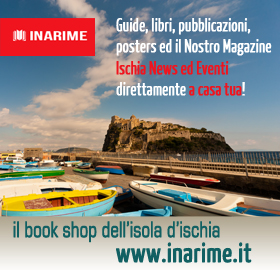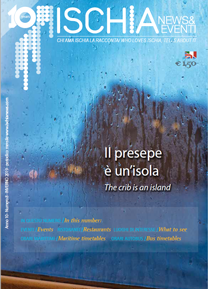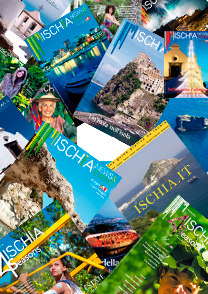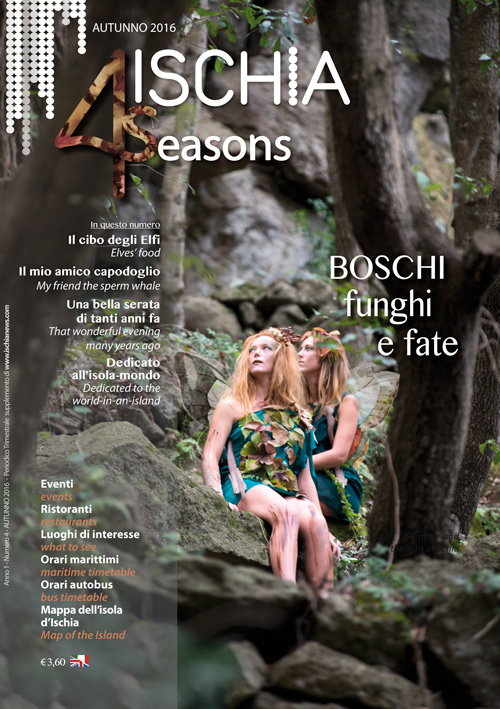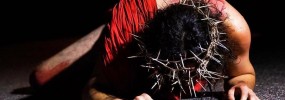
The Passion of Christ. 2024 – Actus Tragicus
After 2 years of pandemic and stop of important events, a sort of normality finally returns in this Easter 2022 in Ischia.
It is with great pleasure and pride that the Actus Tragicus Association is exultant in presenting the artistic event for which it was born on Good Friday, April 15, 2022. And it also does so with great surprise, because the possibility of achieving all this was only made known last week, but the challenge was accepted with great enthusiasm, also thanks to the courageous support of the municipal administration.
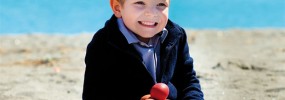
Easter colored eggs and the game of "Tozza tozza"
Children and youngsters, at the first warmth of “summer”, removed shoes and caluosci (wood and leather clogs), and the most fortunate, shoes, walking barefoot on the lava stone slabs already warm. In the short shorts pockets, there were two things, essentialat that time...One was the ubiquitous strummolo (the Spin with string) and the other was the tiramolla (the sling).The latter served to undermine the lizards and, with very little success, small migratory birds skipping plant to plant. Before Palm Sunday instead, in all homes, grandmothers and mothers prepared the eggs dyed red, boiling them with natural dyes, roots or other.The “red eggs” were instant prey to us children and teenagers, boys and girls.Happy, with our egg in hand, we played, for hours, in spaces that smelled of spring and freedom.We played tozza tozza.«When Buonocore ladies put us in a circle to teach the gospel now, the catechism or more dull (only for girls) “good manners” behavior, there was always joker who intervened», recalls my friend Odette Del Dotto.«Signuri, to me, told me Barbone, that the fact of the red eggs, is not a thing of Jesus, but belongs to the pagan history.
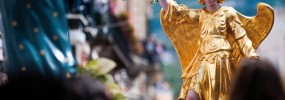
Easter, Passage and the Spring Egg
Easter was also a little known deities belonging to the worship of the ancient Saxons. Scandinavian goddess of spring was the symbol of the resurrection of all nature and was worshiped at the beginning of this season. Just the Norwegians, the “pagans”, at that time, had as a habit, among other things, the exchange of colored eggs called “Ostara eggs” that now have become the "Easter eggs”. It is likely that from this devotion derives the word in English.
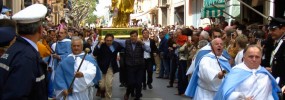
The Angel’s run in Forio on the Island of Ischia
In Forio, the largest of the six municipalities of the island of Ischia, along the main street of the village, in the late morning of Easter Day, occurrs the passion play called the "Angel Run", organized by the ancient Confraternity of Santa Maria Visitapoveri with office in the homonym church in Piazza Municipio.
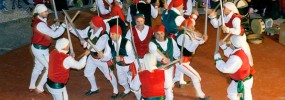
The ‘Ndrezzata’ of Buonopane on Easter Monday
Is not linked to the Christ’ resurrection but is symbol of a moment of peace and the end of hostility among people of Barano and Buonopane. In the 16th century, a fisherman from Barano is said to have given her girlfriend a coral necklace, but the same necklace was founded in the hands of a young guy from Buonopane.

Procida 2022, the Procession of the Mysteries is back
Friday 15 of April the spectacular procession of 30 artistic artifacts, made with the participation of two thousand citizens. And with the “Ritual Project” the sounds of Holy Week give life to a digital archive
A strongly identity ritual that has its roots at the end of the sixteenth century and involves thousands of islanders: on Friday 15 of April the Procession of the Mysteries returns to Procida, included this year in the program of the Italian Capital of Culture 2022.
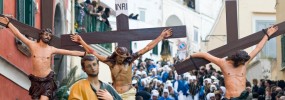
Holy Week as popular tradition of the islands of Ischia and Procida
Holy week is rich in emotional moments to evoke the human passion of Jesus. The rites accompany the catholic liturgy and contribute to pass on and affirm even more the Christianity. Songs, performances, scenic representations that help the visitor to know the island tradition.
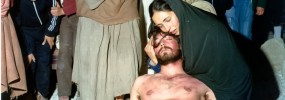
Actus Tragicus in Forio of Ischia
Original sacred drama dedicated to the passion and death of Jesus, the representation was designed and built by St. Francis of Assisi back in 1111 and staged in the streets of Forio from 1982 through the initiative of a group of young volunteers. The participants wear costumes designed and made by a wonderfully well-known local craftsman, in procession through the streets of the country, starting from Municipio square, and to Piazza Colombo where the representation began, the event concludes with crucifixion of Jesus and the thieves at the Soccorso church square.
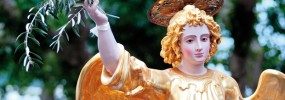
Easter emotions in Forio
Easter in Forio is a collection of faith, culture, history and tradition blend to create atmospheres and inimitable emotions.
Back in 1982, a group of young volunteers of the association Actus Tragicus every year on Fridays before Easter of Resurrection, starting at approximately at 20.00, puts up the Passion of Christ. Original sacred drama over a trail of about 1 km, dedicated to the last 12 hours of Jesus life.
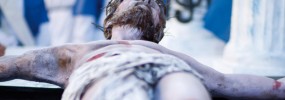
The Mysteries of Procida
The Dead Christ parading in the procession of Good Friday is the very soul of Procida, the quintessential of the man?s personal and intimate pain. These abandoned and bleeding limbs are venerated by many people. There is no superstition, just a great faith that drives anyone to the Church of St. Thomas Aquinas (via Marcello Scotti ), where the headquarters of the Congregation of Turchini and is exposed throughout the year, to feel the need instinctive to accept his hand, especially now that the reliquary of plexiglas that protects it, is to be replaced.


